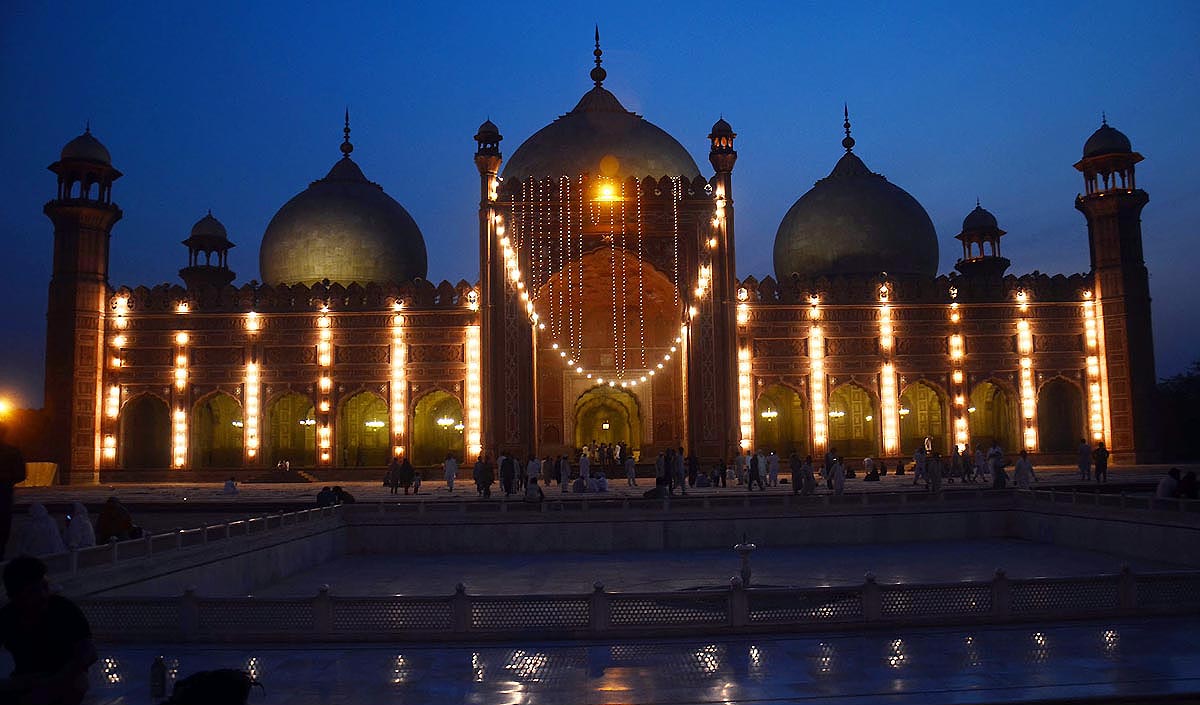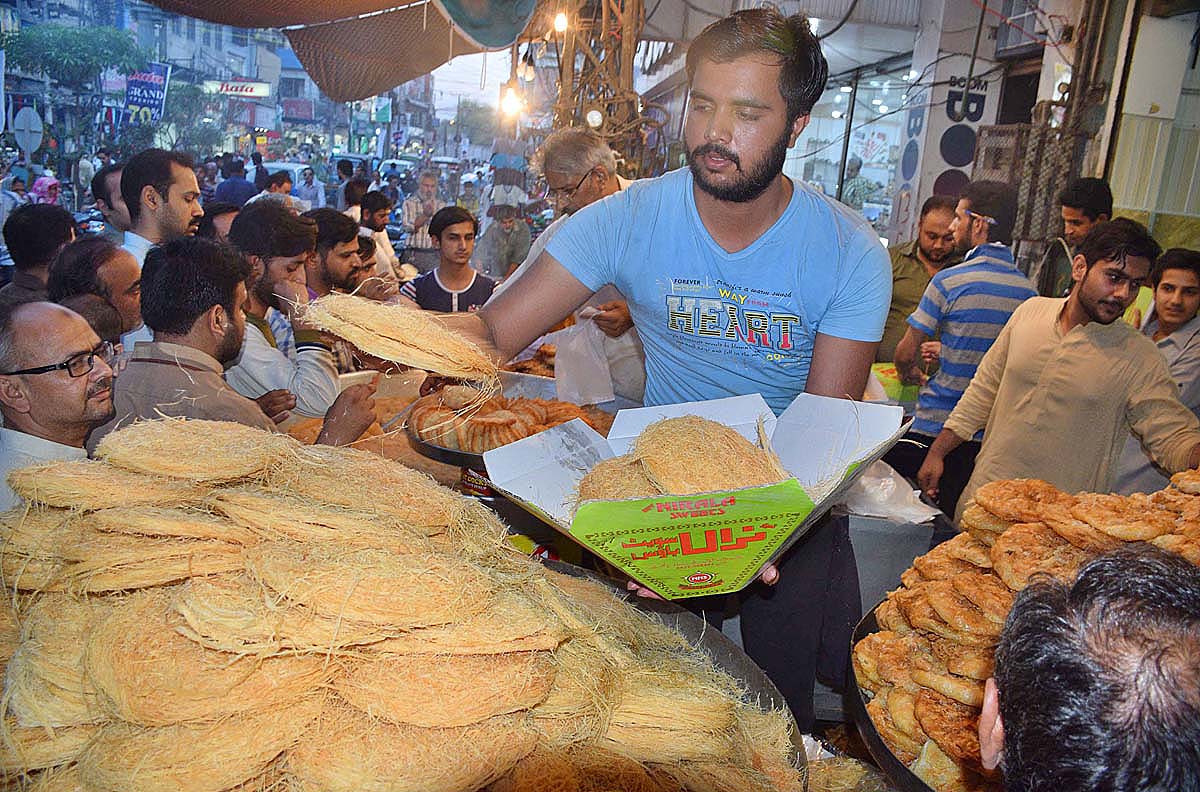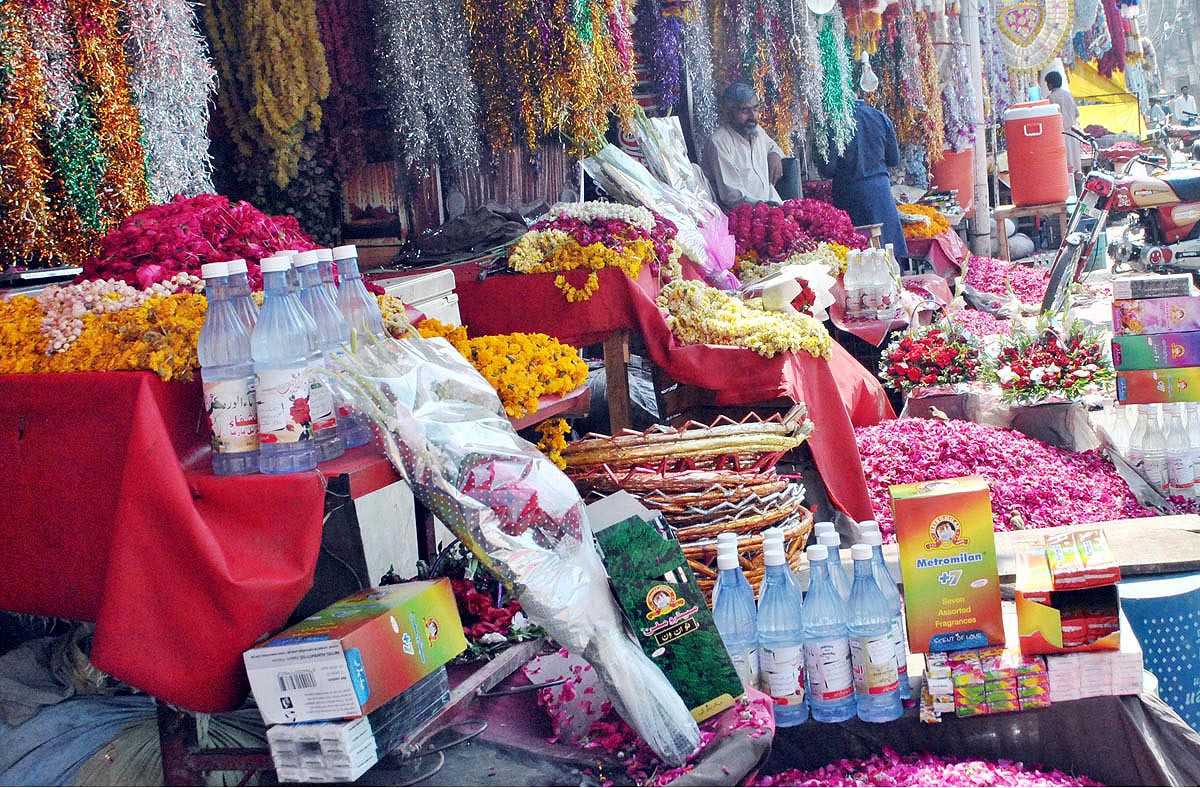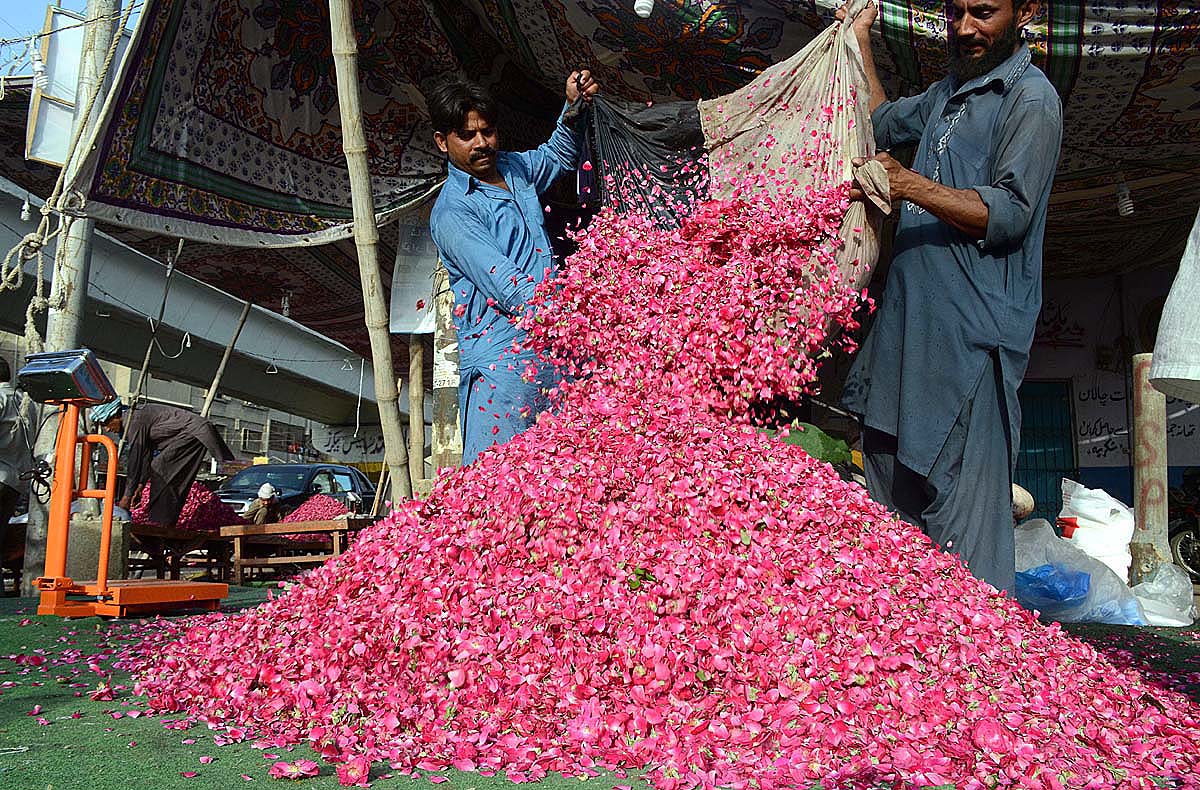Trying to pass his motorbike through a small entrance of the graveyard, a representative of the Karachi Metropolitan Corporation (KMC)’s Garden Department arrives to clear wild shrubs from the area.
Accompanied by three other men, he occupies the little space left on the bench after his magnanimity towards his grass cutters gets the best of him. While one of them smokes, the other speaks about the annual ritual — clearance of wild shrubs and Keekar (Acacia) branches from the pavement built between the graves so as to provide a clear walking space to people visiting them on Shab-e-Barat – annually observed on Shabaan 15.

Otherwise an epitome of desolation, the place attracts a large number of visitors who offer prayers for the deceased on the night. “My father has been working in the graveyard since the last two decades now. People usually come on Thursdays or Fridays and at times on Sundays, but the place is jam packed on Shab-e-Barat,” says Mubarak, son of the caretaker of a small graveyard within Muhammad Shah Qabristan situated in North Karachi.
“This graveyard is huge and we have been clearing the area ever since the 'kunday' – observed in Rajab - started which was around three weeks ago. Our team comprises of eight men and we divide the areas in accordance with the days. Each morning we pick up our set of tools and set out to clear the lands,” says Akram who has been associated with the KMC.

Speaking about the night of Shab-e-Barat, Akram says that the graveyard, which was at the time wearing a deserted look because of the scorching heat, starts being visited by people from a day before Shab-e-Barat.
At the other end of the graveyard which can aptly be described as a labyrinth of tombstones, Mehr and Saleem Manzar are sweeping roads to clear the path for the hordes of people expected to visit later in the night.
“This road wasn’t even visible before we came. It looks spotless because we swept the entire area and we have been doing this since two weeks now,” says Mehr who has been assigned the area by the KMC.
With the sun shining bright atop, the duo covering their faces with a cloth to combat the dust, busy themselves again because they don’t have much time on their hands.

Shopkeepers display flowers and related stuff outside the sops to attract the customers on the eve of Shab-e-Barat the night of fortune and forgiveness, observed across the country with traditional religious zeal and solemnity.
People visiting the graves often carry with them bags of rose petals, packets of incense and at times rosewater. An ailing Muhammad Yaseen Noori set up his shop a few steps away from the entrance in 1981, and like every year he is anxiously waiting for the ‘Bari Raat’ to arrive so his shop would draw more customers.
“I normally shut my shop by Maghrib but tonight I’ll sit here the entire night because people just don’t stop coming; rather after 8pm, the whole place is filled with them. One can’t even step out because of the rush. It’s that time of the year when there’s hustle bustle in the shehr-e-khamoshan’ (city of silence) and the whole place lights up,” Noori says.

Like some known graveyards like Mewa Shah, Sakhi Hasan and Paposh among others, Muhammad Shah also covers a large area with around 50 small tombs of saints.
Established in 1963, the graveyard still has space to bury the dead, however, Iqbal Ahmed who is responsible for the bookkeeping thinks otherwise.
“It has been more than fifty years so it’s not surprising that roads are being used up for graves. But then it’s difficult for families of the deceased to bury their dead elsewhere,” he adds.
At the roundabout before the entrance to the graveyard, many hawkers stand by their carts selling rose petals. Their number has increased in accordance with the night when the demand for the roses is high and people buy from here instead of trying their luck at shops inside the graveyard’s premises.
“On this night, people who never visit graveyards also decide to pay a visit so our sales increase drastically. We get around 50kgs to 60kgs of rose petals, usually from Hyderabad. On other days, I hardly make Rs500 a day because we manage to make Rs10 or Rs20 on a single sale. But today some people would buy 4kgs while others would buy 2kgs, so I think I would sell around 60kgs by the time the night ends,” says Mohsin, a seller.
“In other days, I sell around 10kgs at times or 20kgs if I get very lucky, otherwise I usually have to throw them away because nobody buys dead roses for their dead,” he adds laughing.
The picture shows a pharmacy. — AFP/FileThe Karachi administration has launched a campaign to check the expiry dates...
In this still, Karachi Mayor Barrister Murtaza Wahab addresses an event on April 25, 2024. — Facebook/Barrister...
In this still, Sindh Inspector General of Police Ghulam Nabi Memon chairs a meeting at the Central Police Office on...
Representational image shows police tape. — AFP/FileAn elderly man who ran a general store was shot and killed in...
A handcuffed suspect stands behind the bars with a policeman standing outside the jail in this undated image. —...
In this still, Sindh Chief Minister Syed Murad Ali Shah meets federal energy minister Owais Ahmad Khan Laghari in...







